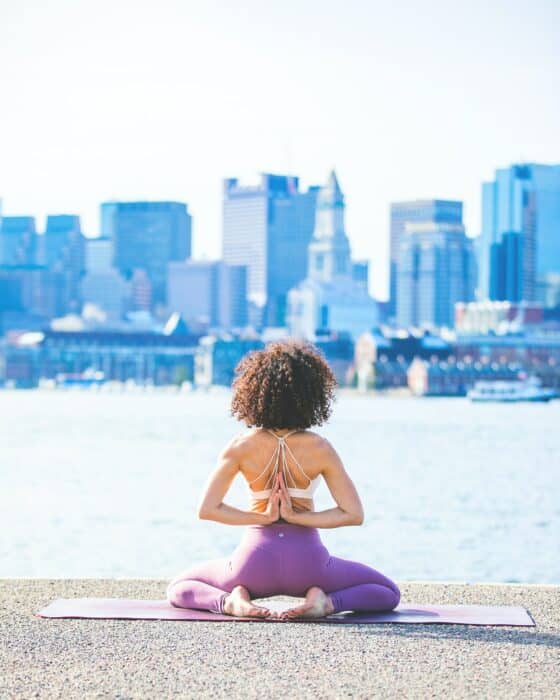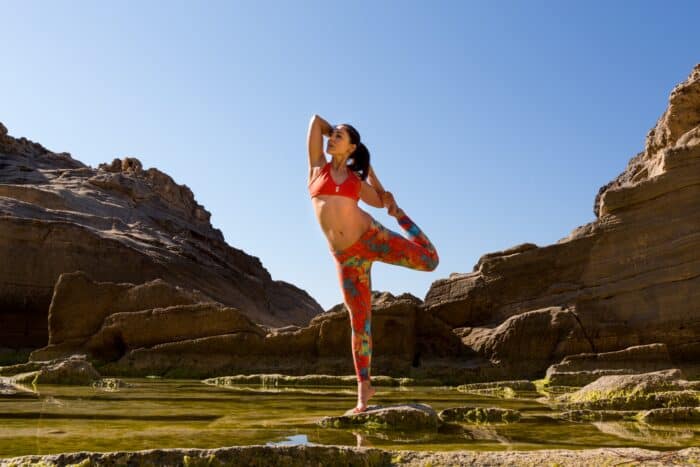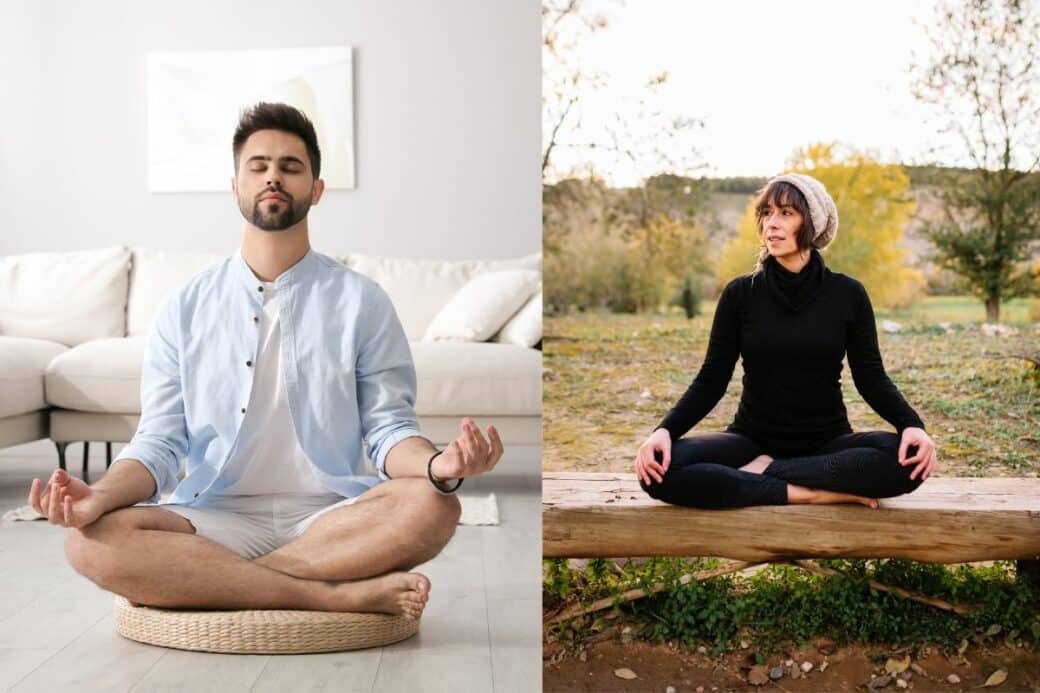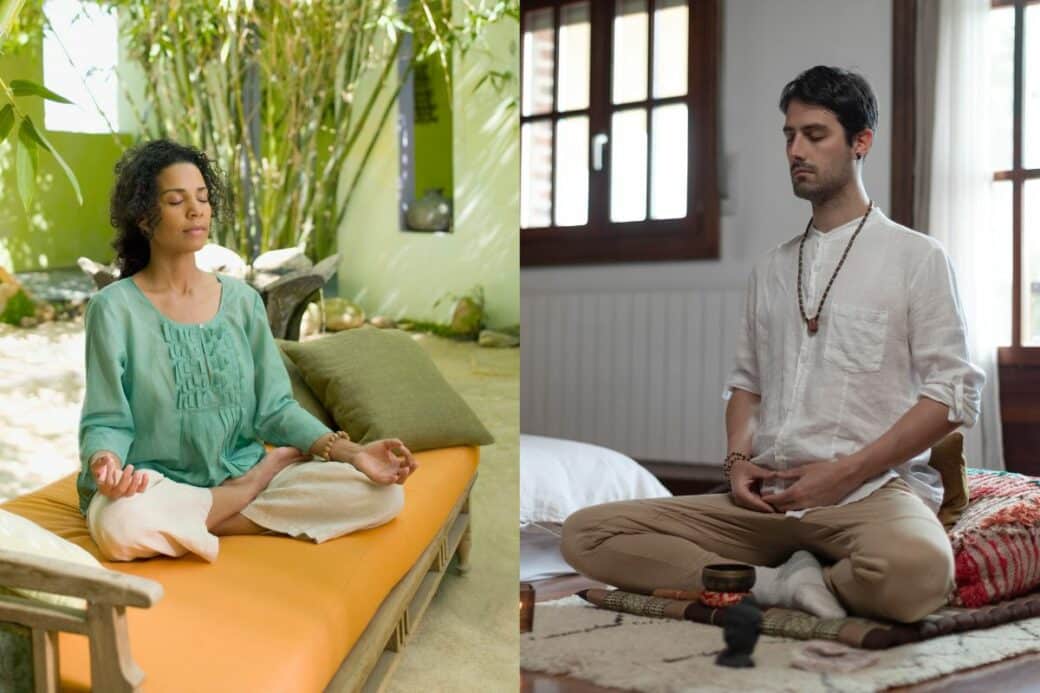Imagine finding the perfect practice to bring harmony and balance into your life. A practice that helps quiet the mind, soothes the body, and cultivates a sense of inner peace. In the realm of self-care, two popular practices stand out: meditation and yoga. While often grouped together, they have distinct differences and unique benefits. Meditation invites you into the depths of stillness and self-reflection, while yoga seamlessly blends physical movement and mindfulness. In this article, we will explore the fascinating world of meditation and yoga, uncovering their individual merits and helping you choose the perfect practice that speaks to your soul.

Meditation Vs Yoga: What is Meditation?
Definition of Meditation
Meditation is a practice that involves training your mind to focus and redirect your thoughts. It is often used to achieve a state of mental clarity and emotional calm. During meditation, you turn your attention inward and eliminate the stream of thoughts that may be crowding your mind. By practicing meditation, you can cultivate a deep sense of inner peace and relaxation.
Purpose of Meditation
The main purpose of meditation is to cultivate a sense of mindfulness and awareness. It allows you to observe your thoughts without judgment and detach from the constant chatter of the mind. Meditation helps you become more present in the moment and enhances your ability to respond to stressful situations in a calm and composed manner. Additionally, meditation is also pursued for spiritual growth and self-discovery.
Benefits of Meditation
Meditation offers a wide range of benefits for both your mental and physical well-being. It has been scientifically proven to reduce stress, anxiety, and depression. Regular meditation practice can improve your emotional well-being, enhance your focus and concentration, increase your self-awareness, boost your creativity, and promote better sleep. Furthermore, meditation has been linked to decreased blood pressure and improved immune function, making it a valuable tool for overall health.
What is Yoga?
Definition of Yoga
Yoga is a holistic discipline that encompasses physical postures, breath control, and meditation techniques. It originated in ancient India and has gained immense popularity worldwide for its ability to promote physical and mental well-being. The word “yoga” means union, and the practice is designed to harmonize the body, mind, and spirit.
Purpose of Yoga
The primary purpose of yoga is to create balance and harmony within oneself. It combines physical movement, breathwork, and mindfulness to improve flexibility, strength, and overall physical fitness. Additionally, yoga is often pursued for its profound spiritual benefits, as it offers a path to self-realization and spiritual enlightenment.
Benefits of Yoga
Yoga offers a multitude of benefits for your physical, mental, and emotional health. It increases flexibility, builds strength, and improves posture. The practice of yoga can also help alleviate chronic pain, reduce stress and anxiety, improve cardiovascular health, and promote better sleep. Furthermore, yoga enhances body awareness, promotes mindfulness, and cultivates a deep sense of relaxation and inner peace.

Physical Aspects
Meditation Postures
During meditation, it is important to adopt a comfortable and relaxed posture that allows for sustained focus and ease of breath. Common meditation postures include sitting cross-legged on the floor, known as the lotus position, or sitting on a chair with your feet flat on the ground. The key is to maintain an upright spine, with your shoulders relaxed and chin slightly tucked.
Yoga Postures
Yoga postures, also known as asanas, encompass a wide range of physical poses that promote strength, flexibility, and balance. From standing poses like mountain pose and warrior poses to seated poses like forward folds and twists, yoga offers a variety of postures that target different areas of the body. Each posture is aimed at improving physical fitness, releasing tension, and promoting overall well-being.
Breathing Techniques
Meditation Breathing Techniques
In meditation, the breath plays a crucial role in shifting your focus inward and calming the mind. Different meditation techniques may involve focusing on the breath, deep diaphragmatic breathing, or following specific rhythmic patterns of breathing. The breath acts as an anchor during meditation, allowing you to stay present and centered.
Yoga Breathing Techniques
In yoga, breathing techniques, or pranayama, are used to regulate and control the breath. These techniques aim to deepen breath awareness and increase the flow of vital energy throughout the body. Pranayama exercises may include deep belly breathing, alternate nostril breathing, and extended exhalation. The various breathing techniques in yoga can help harmonize the mind and body, reduce stress, and enhance overall well-being.

Mindfulness and Focus
Meditation Practices for Mindfulness
Mindfulness is a state of nonjudgmental awareness of the present moment. Meditation is a powerful practice for cultivating mindfulness. Different meditation techniques, such as mindfulness meditation and loving-kindness meditation, can help you develop the ability to observe your thoughts and emotions without getting caught up in them. Regular meditation practice allows you to bring mindfulness into your daily life, enhancing focus, clarity, and emotional resilience.
Yoga Practices for Mindfulness
Yoga itself is a practice of mindfulness. By focusing on the breath and synchronizing movement with breath, yoga helps to anchor your attention in the present moment. During a yoga practice, you become fully aware of your body and the sensations it experiences. This mindful awareness allows you to let go of external distractions and find a sense of inner calm and presence.
Spiritual Connection
Meditation and Spiritual Growth
Meditation has long been associated with spiritual growth and self-realization. Through the practice of meditation, you can deepen your connection with your inner self and explore the realms beyond the physical. It provides a space for introspection and self-inquiry, leading to profound insights and spiritual awakening. Meditation can help you access a higher state of consciousness and experience a sense of unity with all beings.
Yoga and Spiritual Growth
Yoga is deeply rooted in spirituality and offers a pathway to spiritual awakening. It provides a framework for integrating the physical, mental, and spiritual aspects of life. By practicing yoga, you can cultivate a sense of connection with the divine and tap into your highest potential. Yoga philosophy and teachings guide practitioners on a journey of self-discovery and self-transformation, ultimately leading to spiritual growth and enlightenment.

Energy Flow
Meditation Energy Flow
Through meditation, you can experience the flow of energy within your body. By harmonizing your breath, mind, and body, you can awaken and balance the subtle energy centers, known as chakras, along the spine. This energy flow can help you feel more alive, vibrant, and connected to the universal life force. Meditation allows you to tap into your inner energy and harness it for healing, vitality, and spiritual growth.
Yoga Energy Flow
Yoga is specifically designed to enhance the flow of energy within the body. Through the practice of yoga postures, breath control, and meditation, you can activate and align the energy channels, or nadis, throughout the body. This free-flowing energy promotes physical health, mental clarity, and emotional well-being. Yoga awakens the dormant energy within, allowing it to circulate freely, bringing balance, harmony, and vitality to your being.
Stress Relief and Relaxation
Meditation for Stress Relief
Meditation is a powerful tool for managing and reducing stress. By redirecting your focus inward and letting go of the constant stream of thoughts, you can create a state of calm and relaxation. Regular meditation practice has been shown to lower levels of the stress hormone cortisol, reduce anxiety, and promote a sense of overall well-being. It offers a refuge from the demands and pressures of daily life, allowing you to find inner peace and serenity.
Yoga for Stress Relief
Yoga is an excellent practice for stress relief. The combination of physical movement, breath control, and mindfulness allows you to release tension and mental stress. The slow and deliberate nature of yoga postures, coupled with deep breathing, activates the relaxation response in the body. Yoga also encourages the release of endorphins, the feel-good hormones, further promoting a sense of relaxation, calm, and stress reduction.
Physical Fitness
Meditation for Fitness
Although meditation is primarily a practice of the mind, it can have indirect benefits for physical fitness. By reducing stress levels and improving mental well-being, meditation creates a conducive environment for physical fitness. When the mind is calm and focused, it becomes easier to engage in physical activities, exercise, and maintain a healthy lifestyle. Additionally, meditation can help you develop greater body awareness, enhancing your ability to listen to your body’s needs during exercise.
Yoga for Fitness
Yoga is renowned for its physical benefits and its ability to improve overall fitness. The practice involves a wide range of dynamic and static postures that engage various muscle groups, promoting strength, flexibility, and endurance. Regular yoga practice can enhance cardiovascular health, improve balance and coordination, tone the body, and increase overall physical fitness. Furthermore, yoga offers a low-impact form of exercise suitable for all fitness levels, making it accessible to everyone.
Conclusion
Choosing Meditation or Yoga Based on Personal Needs
Both meditation and yoga offer a plethora of benefits for your physical, mental, and spiritual well-being. By understanding the aims and benefits of each practice, you can choose the path that resonates most with your personal needs and goals. If you seek mental clarity, stress relief, and the cultivation of mindfulness, meditation may be the ideal choice. On the other hand, if you desire physical fitness, flexibility, and a holistic approach to well-being, yoga may be the perfect fit. Ultimately, the best practice for you is the one that brings you joy, inner peace, and a deeper connection with yourself and the world around you. Explore both meditation and yoga, and let your own inner wisdom guide you on the path that feels most aligned with your journey.




